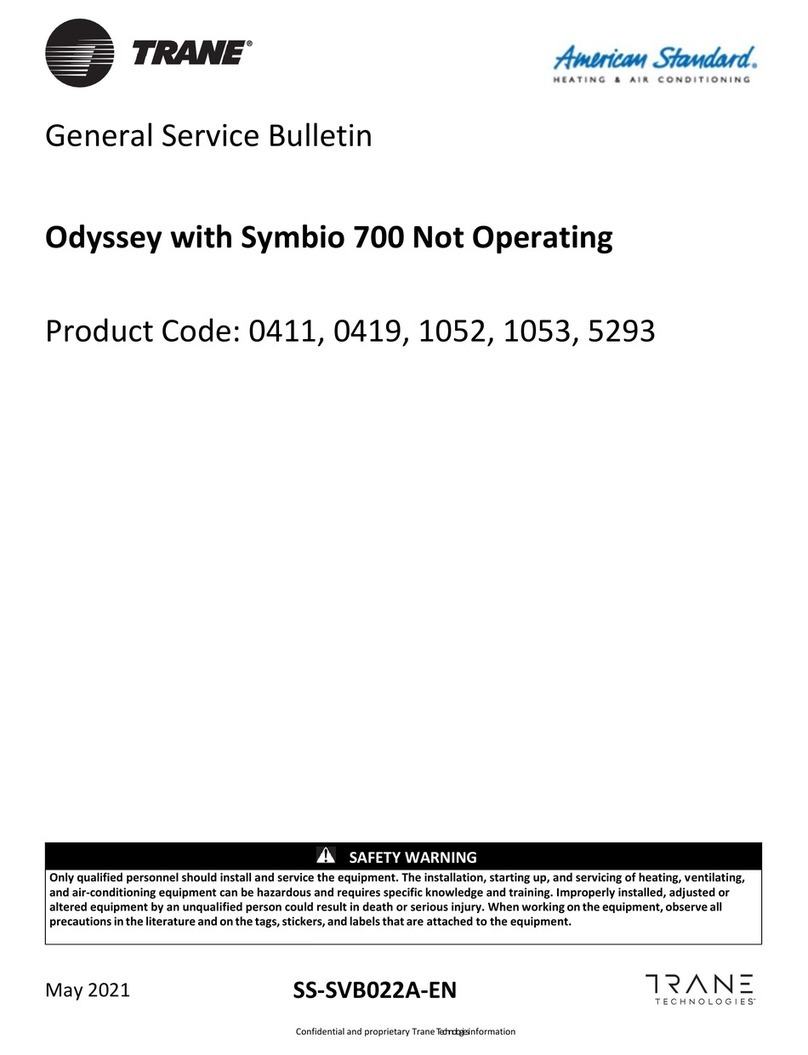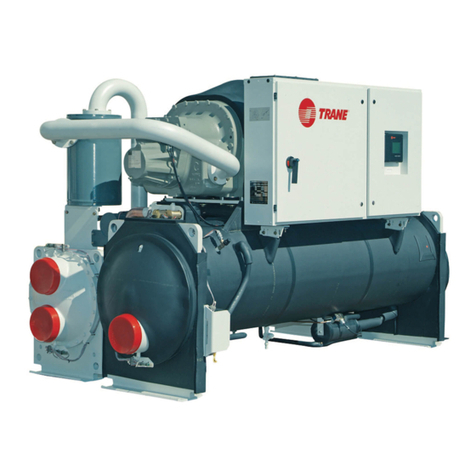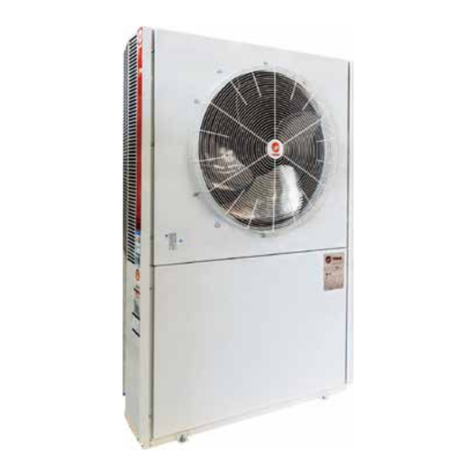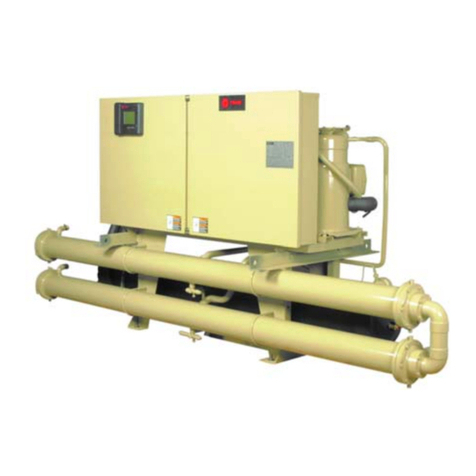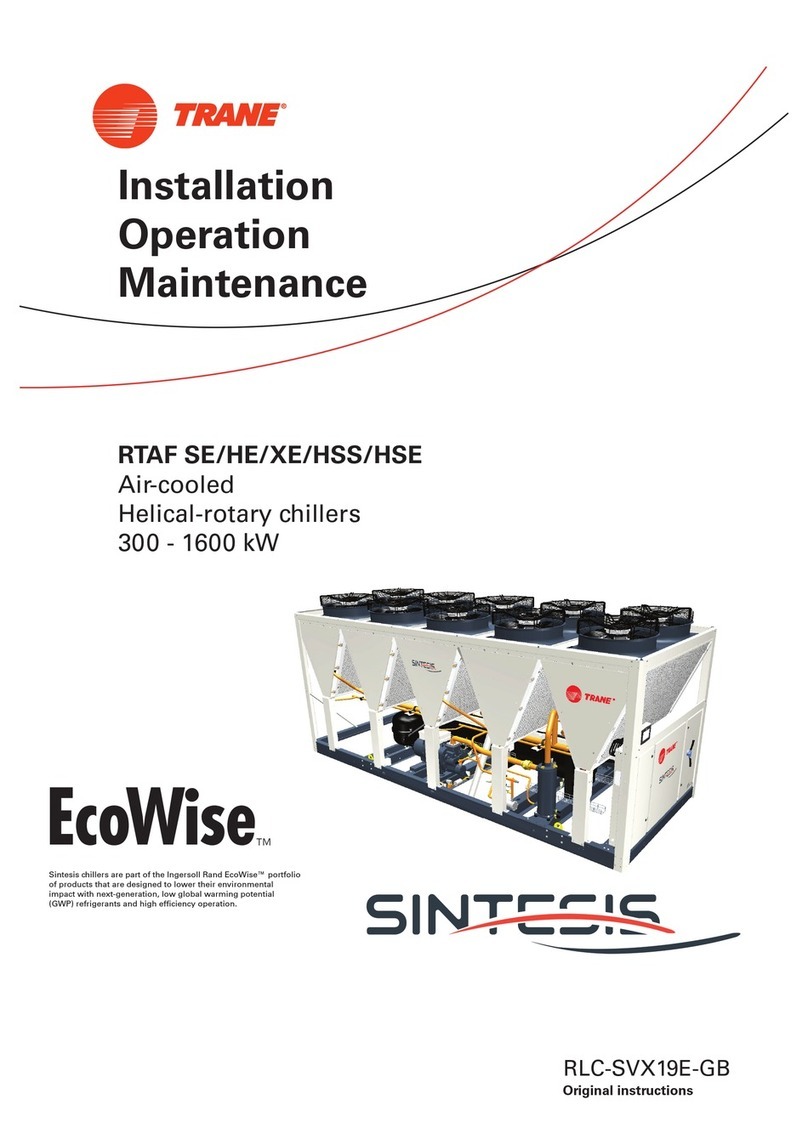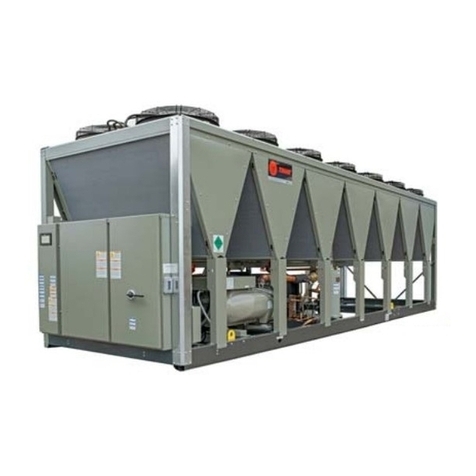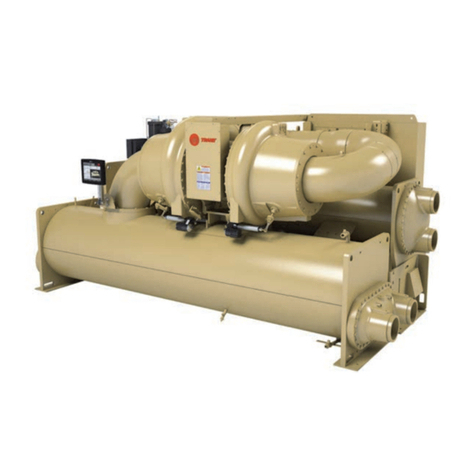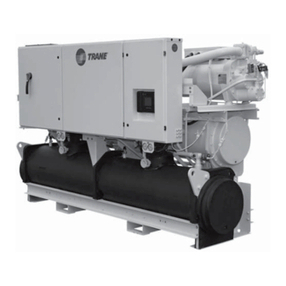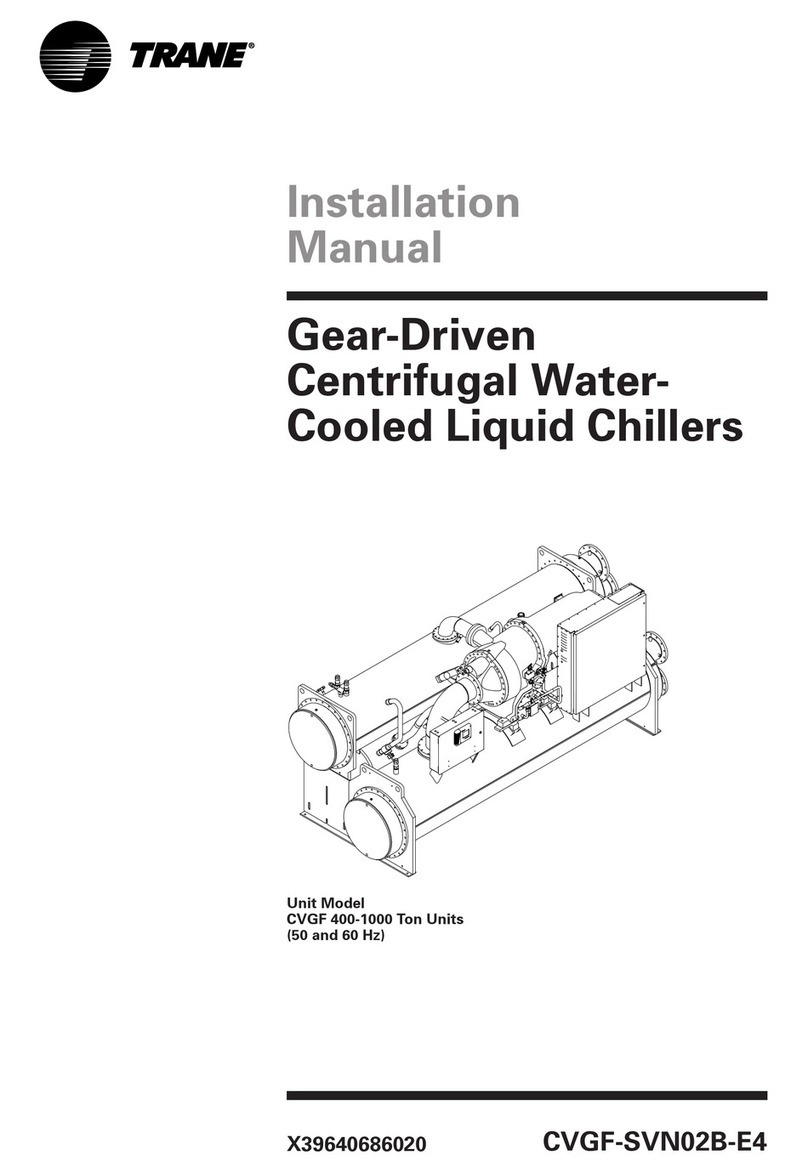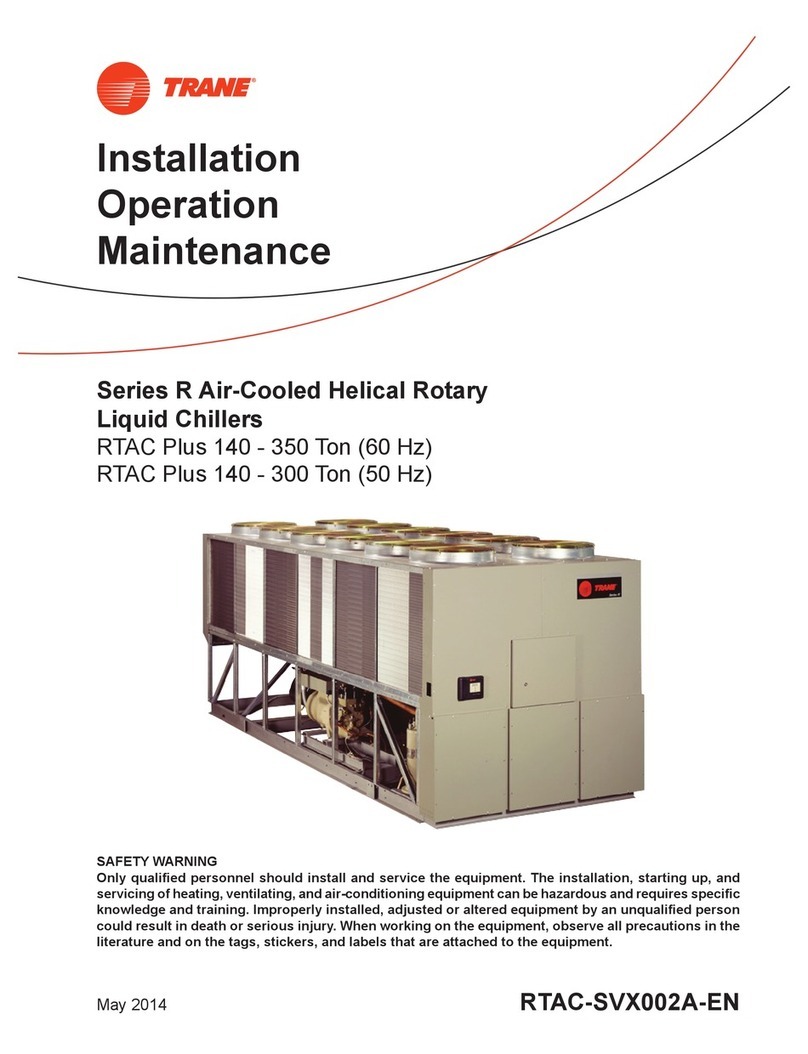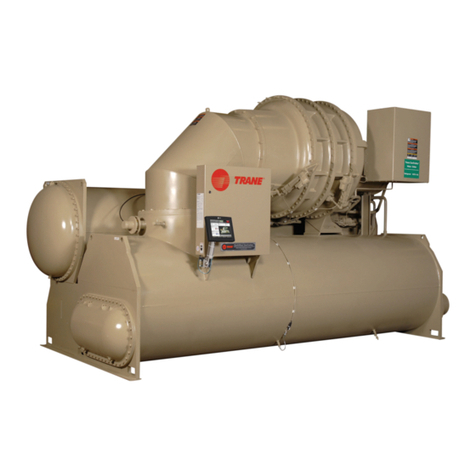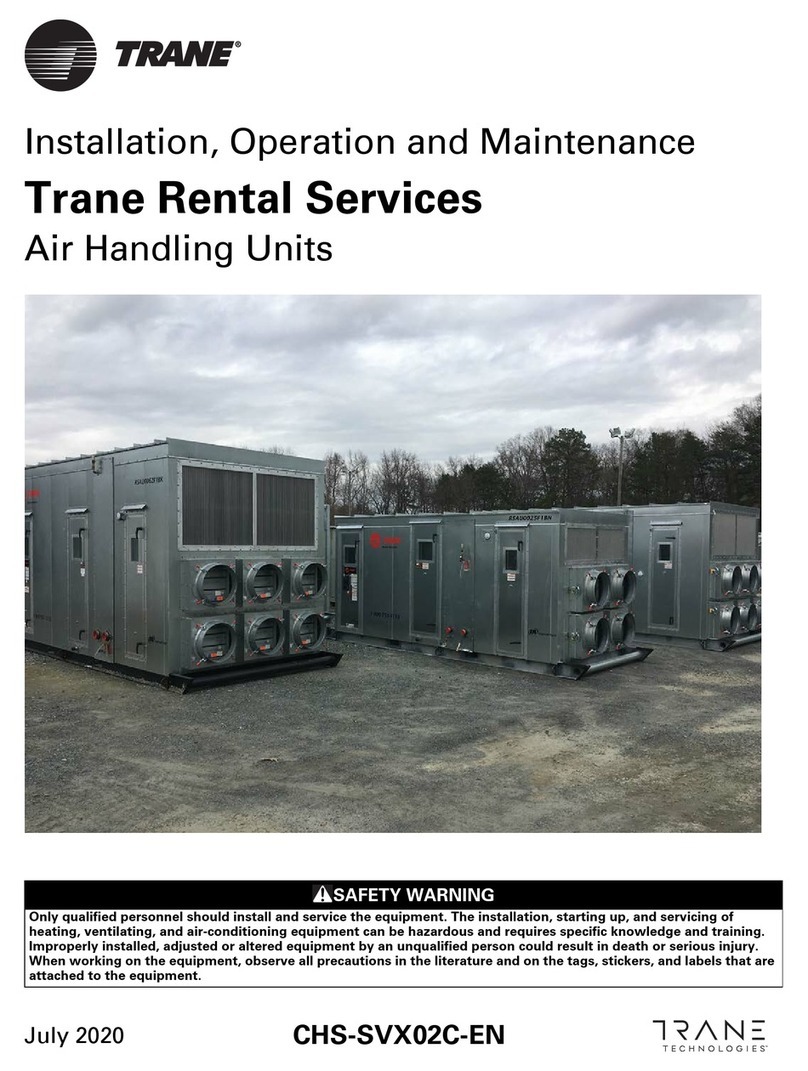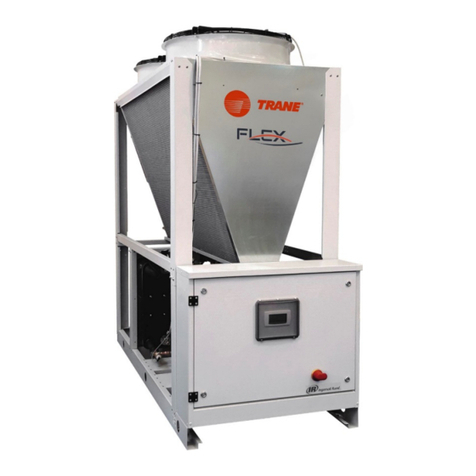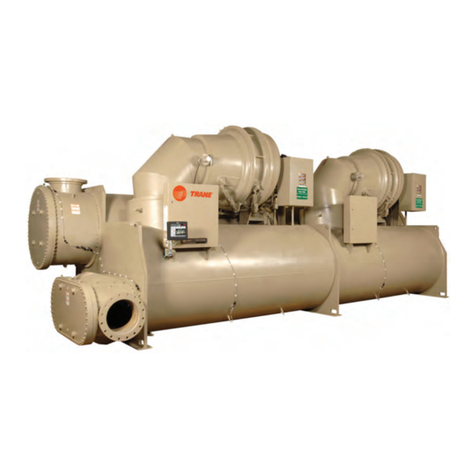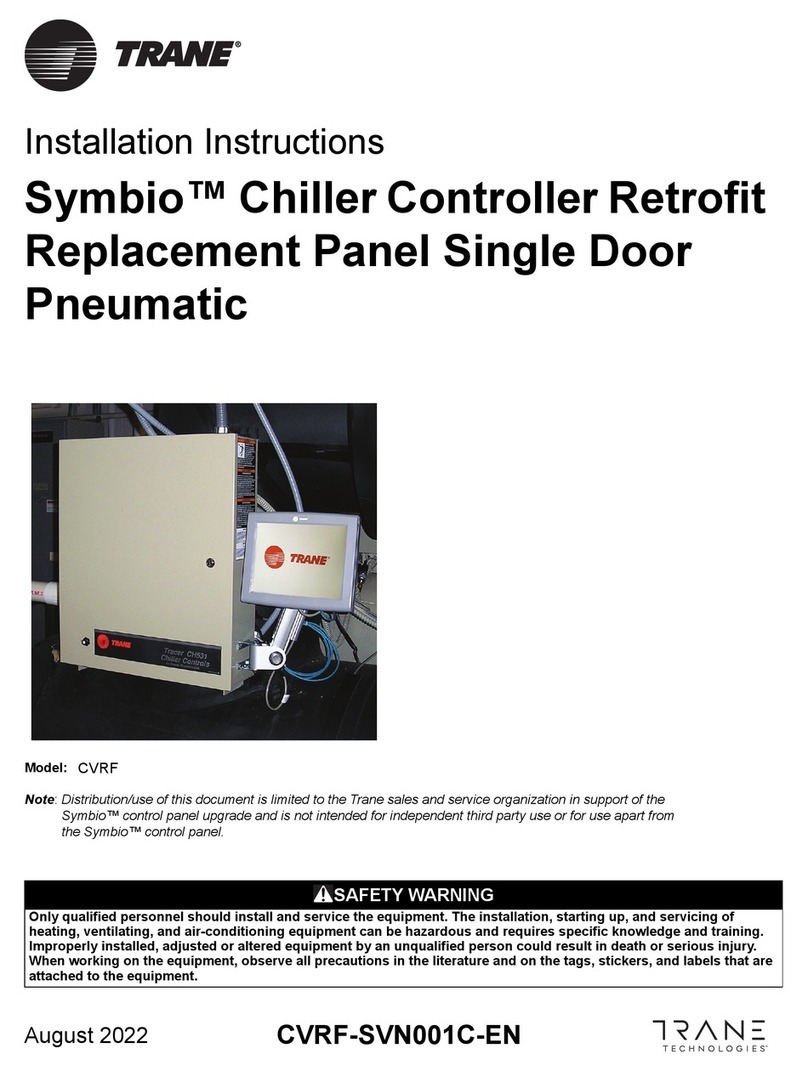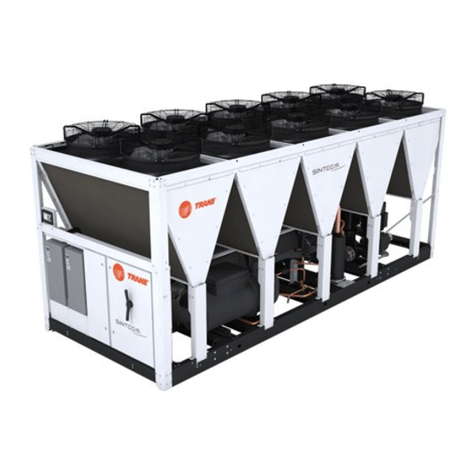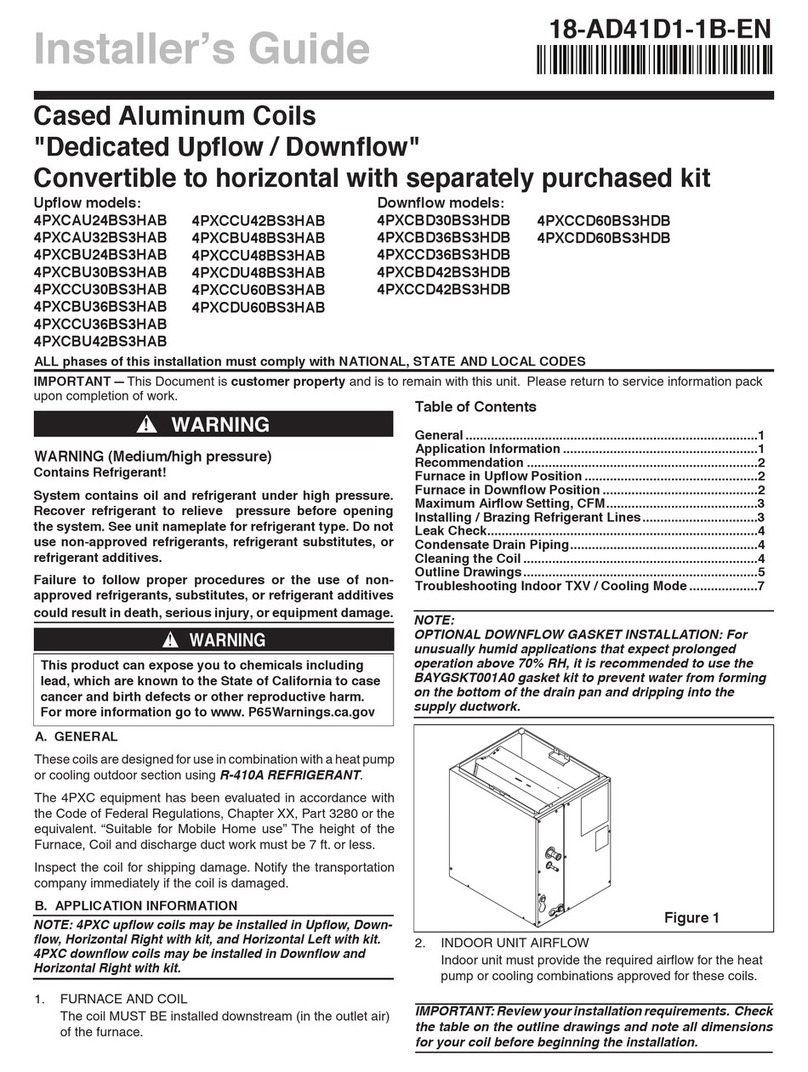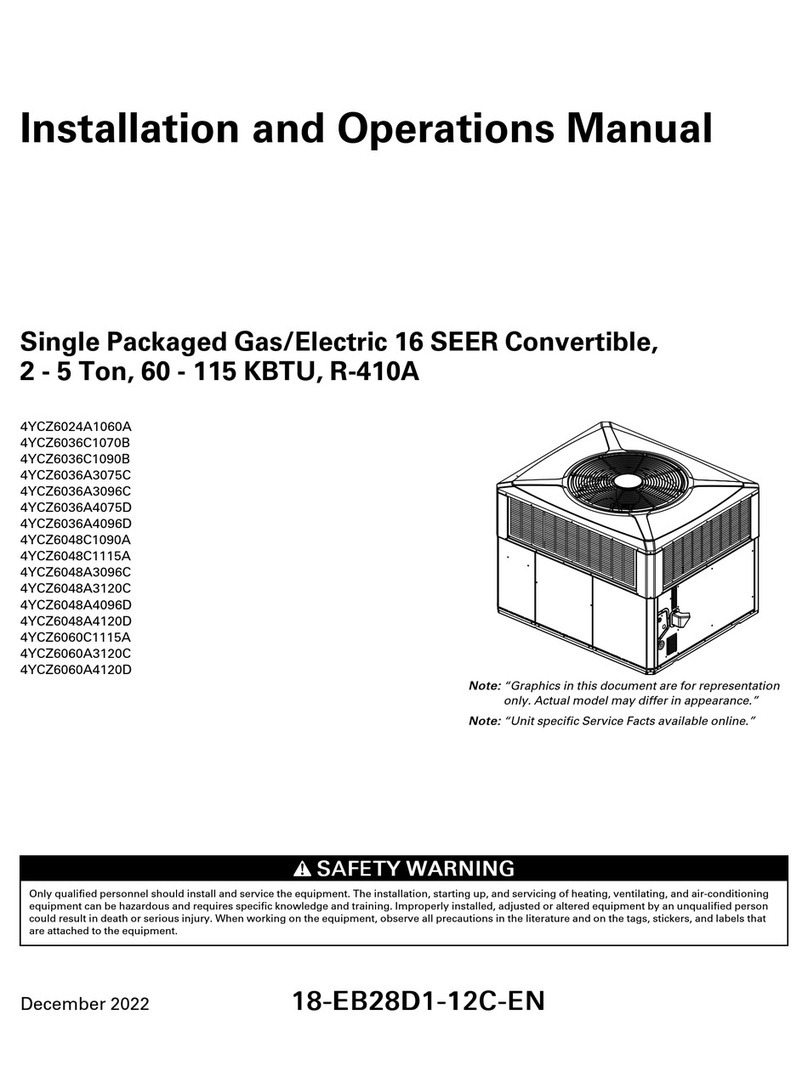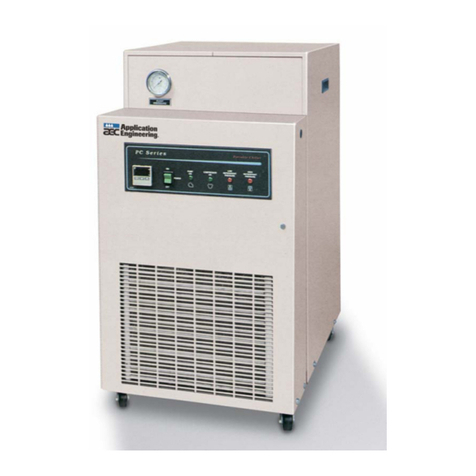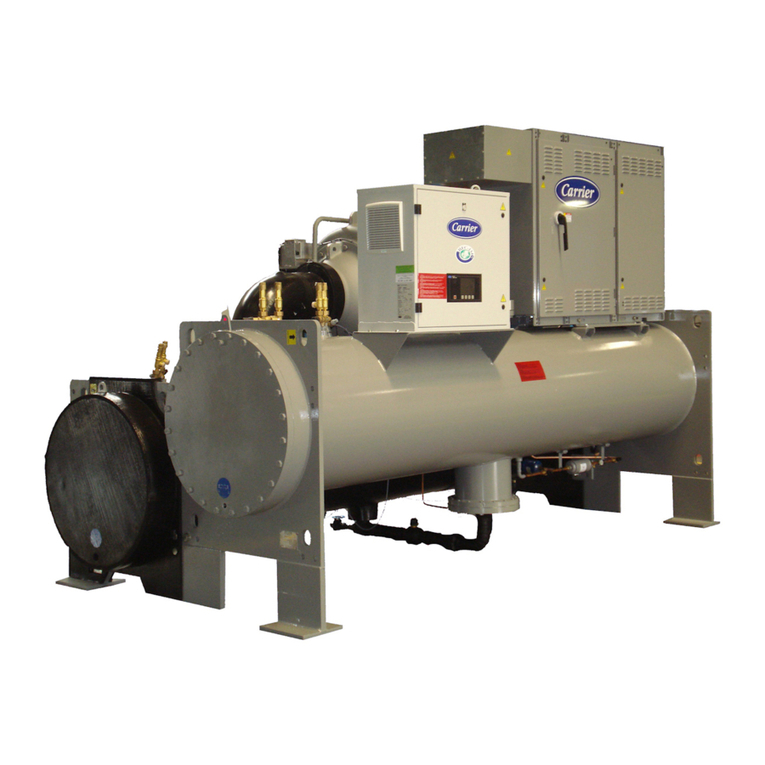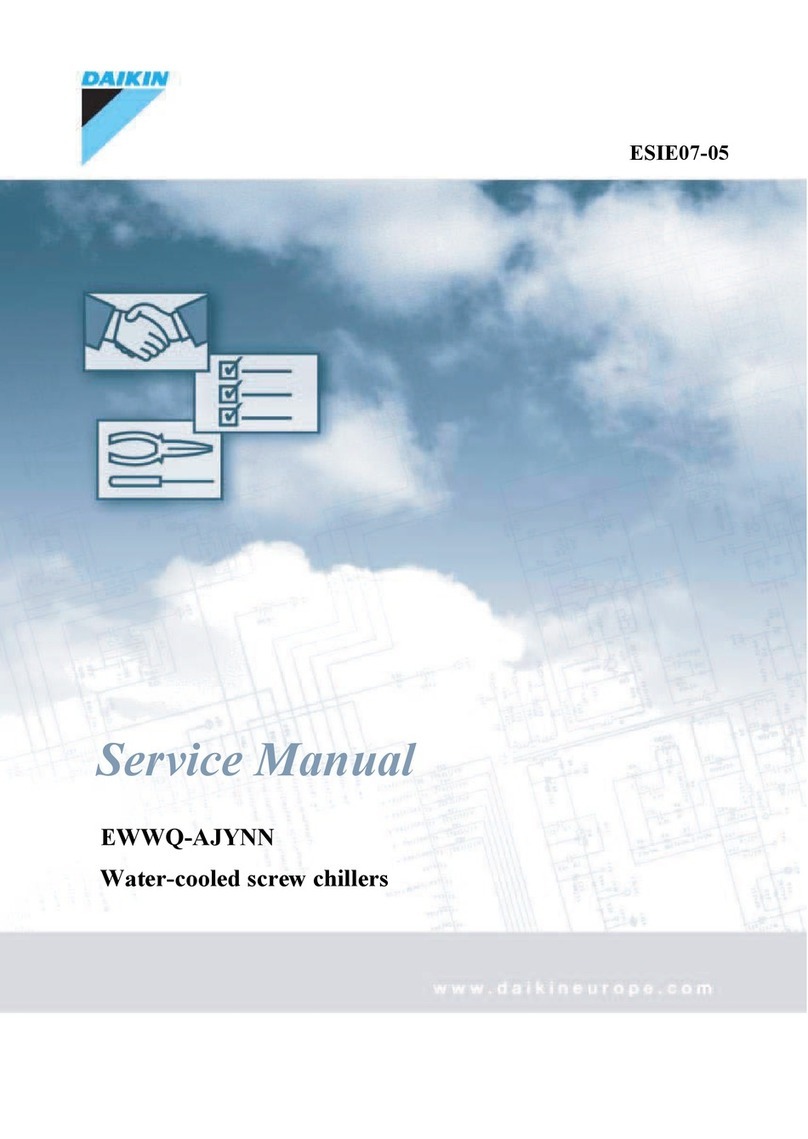
Page 2
Read this manual carefully before attempting to install, operate, or
perform maintenance on this unit. Installation and maintenance
should be performed by qualified service technicians only.
INSPECTION
1. Check for damage after the unit is unloaded. Report promptly,
to the carrier, any damage found to the unit. Do not drop the unit.
IMPORTANT: The use of “spreader bars” is required when
hoisting the unit (to prevent damage to sides and top).
2. Check the unit’s nameplate to determine if the unit is correct for
the intended application. The power supply must be adequate
for both the unit and all accessories.
3. Check to be sure the refrigerant charge has been retained during
shipment. Access to 1/4" flare pressure taps may be gained by
removing the furnace compartment access panel.
GENERAL INFORMATION
IMPORTANT: RECONNECT ALL GROUNDING DEVICES.
ALL PARTS OF THIS PRODUCT CAPABLE OF CONDUCTING
ELECTRICAL CURRENT ARE GROUNDED. IF GROUNDING
WIRES, SCREWS, STRAPS, CLIPS, NUTS OR WASHERS
USED TO COMPLETE A PATH TO GROUND ARE REMOVED
FOR SERVICE, THEY MUST BE RETURNED TO THEIR ORIGI-
NAL POSITION AND PROPERLY FASTENED.
IMPORTANT: ALL POWER LEGS MAY NOT BE BROKEN BY
CONTACTORS. SEE WIRING DIAGRAM ON UNIT CONTROL
BOX COVER.
SAFETY NOTICE. THIS INFORMATION IS INTENDED FOR
USE BY INDIVIDUALS POSSESSING ADEQUATE BACK-
GROUNDS OF ELECTRICAL AND MECHANICAL EXPERI-
ENCE. ANY ATTEMPT TO REPAIR A CENTRAL AIR CONDI-
TIONING PRODUCT MAY RESULT IN PERSONAL INJURY
AND/OR PROPERTY DAMAGE. THE MANUFACTURER OR
SELLER CANNOT BE RESPONSIBLE FOR THE INTERPRE-
TATION OF THIS INFORMATION, NOR CAN IT ASSUME
LIABILITY IN CONNECTION WITH ITS USE.
IMPORTANT: Read this entire manual before beginning instal-
lation procedures.
These units are designed for outdoor installation. For proper instal-
lation, the following recommendations must be considered.
NOTE: Unit shipped for horizontal installation.
The discharge air from the condenser fans must be unrestricted for
a minimum of 3 feet above the unit.
NOTE: If any internal accessories are to be added to the unit it
should be done at the shop if at all practical.
2. Unit should be positioned so Roof-Run-Off water does not pour
directly on unit.
4. Exhaust vents or other sources of contaminated air should not
be near unit air inlet if outside air is to be introduced as a make-
up air.
5. Check the handling facilities to insure the safety of personnel
and the unit(s).
6. CAUTION MUST BE TAKEN AT ALL TIMES TO AVOID PER-
SONAL INJURIES AND/OR DAMAGE TO EQUIPMENT.
7. The unit must be mounted level for proper drainage of defrost
water through the holes in the base pan.
8. Flexible duct connectors must be of a flame retardant material.
All duct work outside of the structure must be insulated and
weatherproofed in accordance with local codes.
10. Holes through exterior walls must be sealed in accordance with
local codes.
11. Access and service clearances for the unit must be given careful
consideration when locating the duct entrance openings. Figure
2 provides unit dimensions.
12. All fabricated outdoor ducts should be as short as possible.
13. Be sure the hole in the structure for the ducts is large enough to
accommodate the fabricated ducts and the insulation sur-
rounding them. (See Figure 2.)
CLEARANCES
1. The recommended clearances for single-unit installations are
illustrated in Figure 2. These minimum requirements are not only
an important consideration when determining unit placement,
but they are also essential to ensure adequate serviceability,
maximum capacity, and peak operating efficiency.
2. Any reduction of the unit clearances indicated in this illustration
may result in condenser coil starvation, or the recirculation of
warm condenser air. Actual clearances which appear to be
inadequate should be reviewed with a local sales engineer.
UNIT SUPPORT
If unit is to be roof mounted, check building codes for weight
distribution requirements. Check unit nameplate for supply voltage
required. Determine if adequate electrical power is available. Refer
to specification sheet.
LOCATION AND CLEARANCES
Installation of the unit should conform to local building codes or, in
the absence of local codes, to the ANSI/NFPA No. 70-1987 National
Electrical Code or “Latest Revision.” Canadian installations must
conform to CSA and local codes.
Select a location that will permit unobstructed airflow into the
condenser coil and away from the fan discharge and permit unob-
structed service access into the compressor compartment. Sug-
gested airflow clearances and service clearances are given in
Figure 2.
LOCATIONS AND RECOMMENDATIONS
